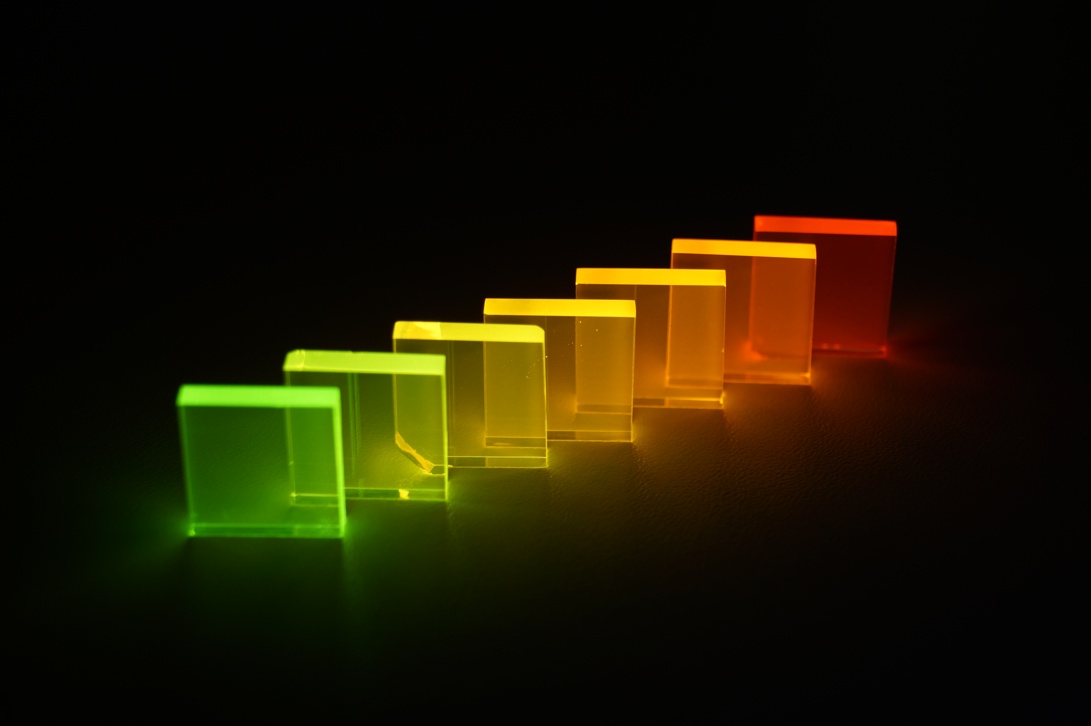Temperaturmessung mit Leuchtstoffen
A research team at the Fraunhofer Application Center for Inorganic Phosphors Soest has developed and submitted a patent application for luminescent glass systems that change color according to the temperature. Theses glass systems can be used, for example, for temperature measurement.

By no means are phosphors limited to applications in light engineering and lighting technology. A patent recently issued to the Fraunhofer Application Center Soest shows that temperature measurement is possible as well. The researchers developed a class of luminescent glass systems that change their luminous color depending on the temperature. Here the change in the luminous color is reversible, so the glass resumes its initial color when it cools. Luminescence is optically stimulated in the ultraviolet and blue spectral range, using a corresponding LED or also from a larger distance with a test laser, for example.
“There are many possible fields of application,” says Prof. Stefan Schweizer, one of the three inventors. “For example, I could imagine applications where hot panes of glass need to be pointed out, such as the window in the door of an oven or also for a ceramic glass cook top.” One advantage of the luminescent glass systems over conventional temperature measuring strips or thermochromic paint is that they can be molded as desired, expanding the range of design possibilities. The fact that luminescent glass systems are colorless and transparent when they are inactive is another design advantage.
In the glass system developed by the Fraunhofer experts, two (or more) different metal ions from the rare earths group are optically activated. The different metal ions each have their own characteristic luminescence. When the temperature increases, the intensity ratio between the two rare earths changes, creating a different color impression. For example, when a glass system containing europium and terbium ions is used, the glass glows red at room temperature (typical for europium), while taking on a rich green color (typical for terbium) at a temperature of 500 °C. A continuous transition from red to yellow and orange to green occurs in between these two extremes.